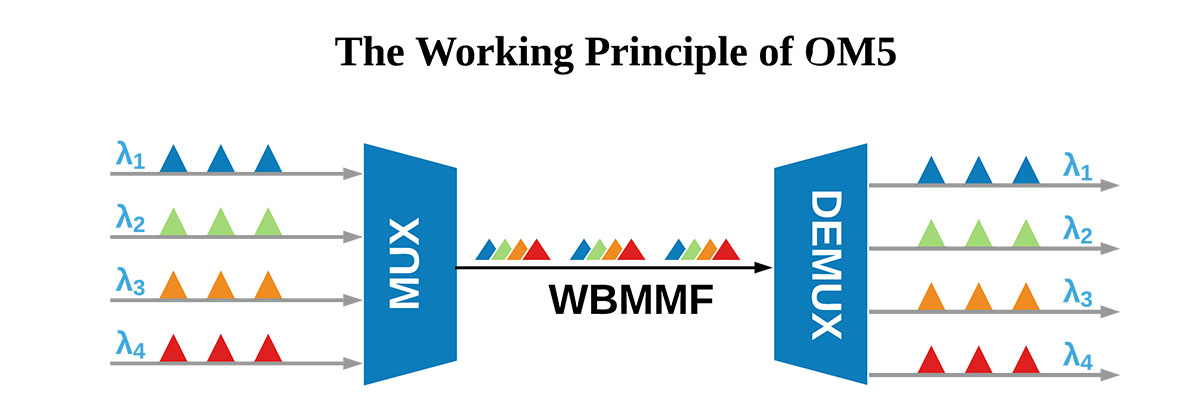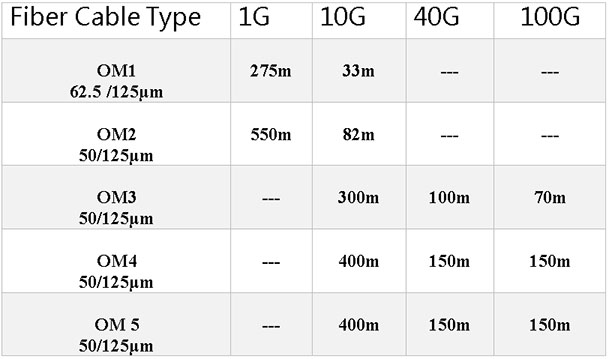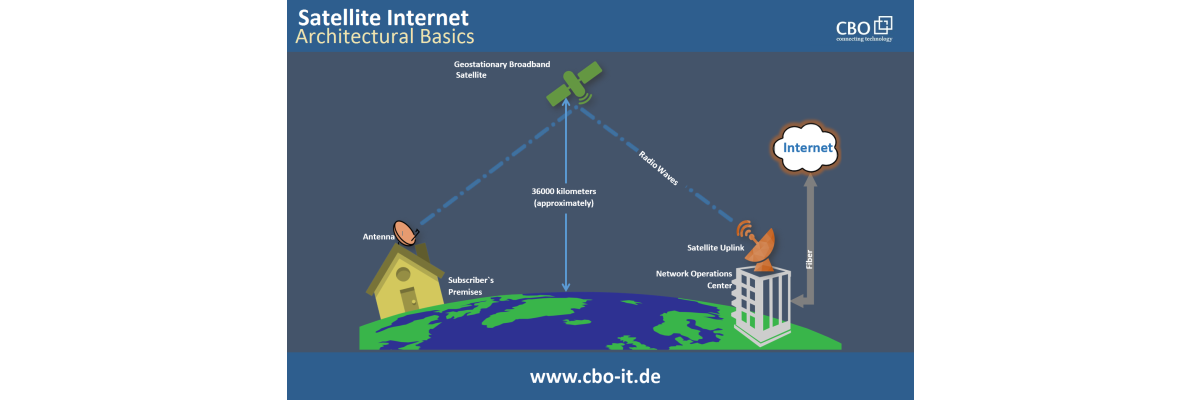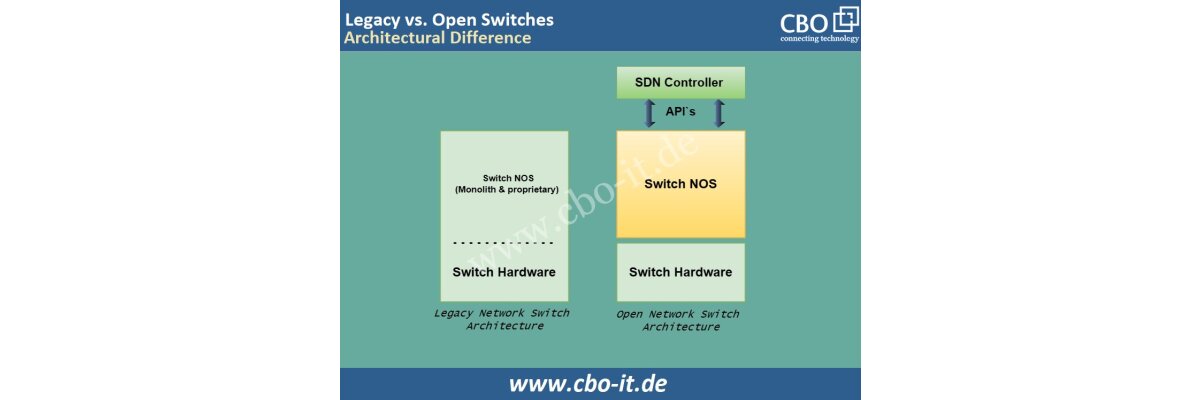Data centers are moving towards higher densities and higher speeds constantly. 25G and 100G Ethernet are already there, and the industry is now working on next-generation technologies such as 200G and 400G. Currently, Multimode Fiber (MMF) is considered as one of the most cost-effective solutions available. For short-reach interconnects MMF cabling systems coupled with VCSEL and LED are ideal. In the current situation, multimode cabling options are way better than the single-mode cabling options. However, it is often said that the future standard will work with single-mode fiber. Let us proceed with a brief discussion, advantages and possible disadvantages of newly introduced OM5 cabling technology. The following image shows how wideband multimode fiber works:

The Background of OM5 & Its Development
OM5, previously known as Wide Band Multimode Fiber (WBMMF) is the latest multimode fiber designed to support four low-cost wavelengths in 850 nm - 950 nm range. Back in October 2014, a particular workgroup was initiated by the Telecommunications Industry Association (TIA) with a mandate of developing guidance for a WBMMF standard to support rapidly emerging SWDM transmission. After almost two years of research and experiments In June 2016, the TIA-492AAAE standard (that provide guidelines on OM5) got approved. The following table has some necessary information about the advantage OM5 offers over other multimode fiber cabling solutions.

Can OM5 Benefit Data Centers?
OM5 fiber is considered as a new generation of MMF (multimode fibers). It hasn’t been long when it got standardized. Different from its predecessors (OM1 to OM4), OM5 fiber is designed to operate over a broad range of wavelengths. Moreover, it also supports a technology called short-wavelength division multiplexing or SWDM. Thus, an optical transmission OM5 can help by reducing fiber counts. Following you can find some specific advantages and disadvantage of this newly launched fiber in the data center environment.
Advantages of OM5
Firstly, we have to understand that OM5 is emerged to address the high bandwidth challenges. In this regard, this optical fiber is going to benefit data centers for sure. Its main advantages can be found in the following parts:
Compatibility
OM5 cable is similar to OM3 and OM4 when it comes about fiber size. Thus, OM5 is entirely compatible with two of its predecessors. Let us put it in another way. In existing data center networking infrastructure, OM5 cabling support all legacy applications. Significant changes will not be required for an upgrade to OM5.
Distance
For short reach connections, a multimode patch cord is considered as the first choice. The OM4 patch cord is designed to support up to 100 m link length with 100G-SWDM transceivers. In the case of OM5, the reach can be extended to 150 m with similar kind of fiber optic transceivers. Therefore, OM5 is an excellent choice for data center optimization.
Cost
A lot depends on value when it comes to data center construction. Here, the comparison should be between single mode and multi-mode fibers. We know about the declining prices of single mode fibers. However, multimode fibers are much more effective as a whole, because short reach connections can be found standard in most data centers. Among these multimode fibers, OM5 is going to be the best choice as it supports SWDM applications.
Disadvantages of OM5
Setup Costs
Undoubtedly, OM5 can be a very economical and cost-effective solution in the long term. However, its initial setup cost is much higher than other cabling options such as OM4. Moreover, OM5 have not many benefits over OM4. Thus, upgrading to OM5 won’t be a wise choice for data centers operating with OM4 cabling emplace.
Limited Use Cases
For now, clear use cases for OM5 technology are limited. Moreover, its advantages over its predecessors such as OM4 are ordinary rather than revolutionary. In most cases, OM4 can provide you with the required performance. As we have discussed above, an OM5 patch cable can bring you an extension of 50 meters only.
Conclusion
Well, OM5 has a definite edge over OM3 and OM4. However, it’s still a new technology. Even some renowned vendors are confused about OM5. In our view, large scale data center operators should hold with their current infrastructure. According to some reports, single-mode fiber is going to dominate the data center industry in the upcoming years. With the available standards, transceivers and resources OM5 is not going to create anything revolutionary. Currently, OM5 can be recommended for 40G SWDM applications so that an extension from 150 m to 450 meters can be achieved.
 English
English
 Deutsch
Deutsch
 Espaniol
Espaniol










